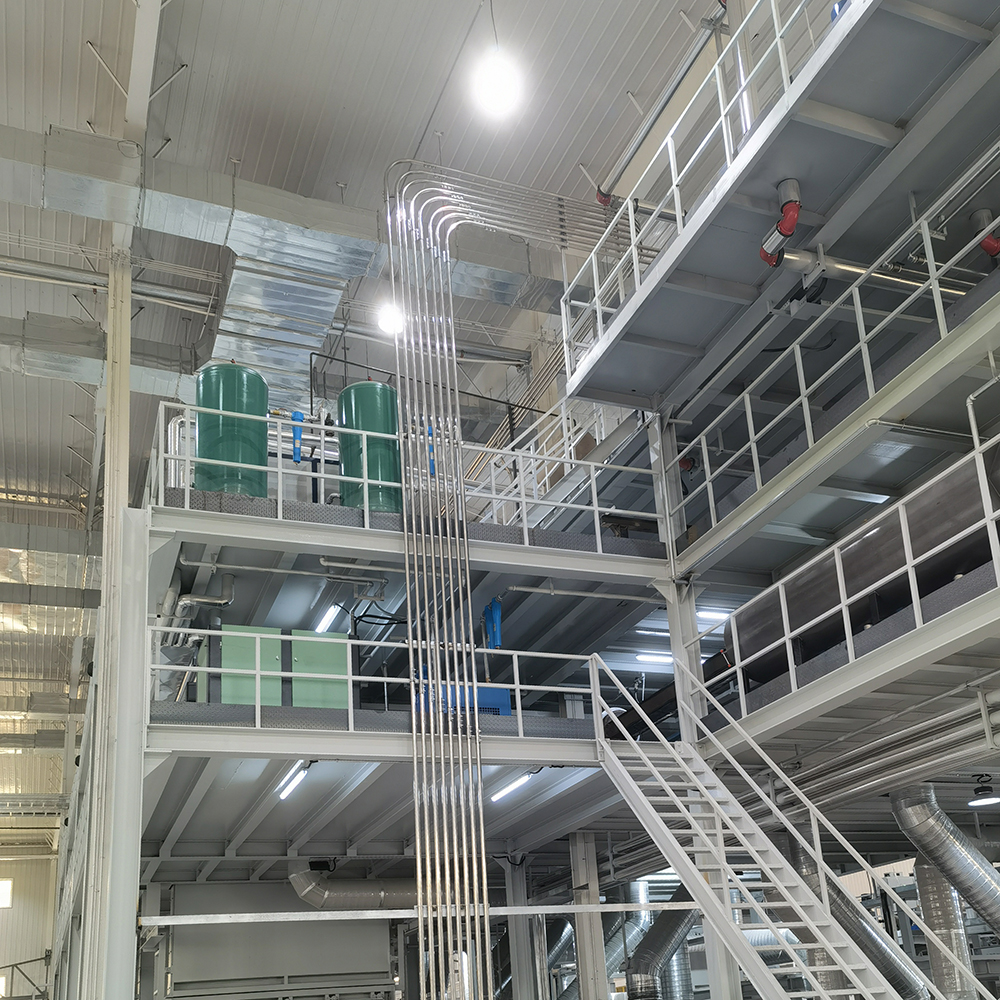Operating and maintaining non-woven machines come with various challenges, some of which include:
- Complexity of Machinery: Non-woven machines can involve intricate systems and processes, requiring skilled operators capable of understanding and managing the complexities involved.
- Optimizing Production Efficiency: Balancing production speed with quality standards while minimizing downtime or machine errors is a constant challenge in non-woven fabric production.
- Material Compatibility and Handling: Different types of fibers or materials may require specific handling or processing techniques. Ensuring the machines can handle diverse materials efficiently is crucial.
- Maintenance and Upkeep: Regular maintenance is essential for optimal machine performance. Downtime for maintenance can impact production schedules, making it challenging to balance maintenance needs with production demands.
- Quality Control: Ensuring consistent fabric quality and meeting industry standards requires continuous monitoring, testing, and adjustments, posing challenges in maintaining uniformity across production batches.
- Technology Upgradation: Adapting to new technologies or upgrading existing machines to remain competitive can be challenging due to the costs involved and the need for training staff on new systems.
- Safety Measures: Non-woven machines involve various moving parts and high-speed operations, posing safety challenges for operators. Ensuring a safe working environment and compliance with safety regulations is crucial.
- Environmental Considerations: Addressing environmental concerns such as waste reduction, energy efficiency, and sustainable practices in fabric production presents challenges for non-woven machinery operations.
- Supply Chain and Raw Material Issues: Dependence on consistent and quality raw materials and potential disruptions in the supply chain can impact production schedules and output.
- Skilled Workforce: Finding and retaining skilled operators and maintenance personnel proficient in operating and troubleshooting non-woven machines can be a challenge in some regions.
Addressing these challenges requires a combination of advanced training, robust maintenance schedules, technological advancements, quality control measures, and a proactive approach to adapt to evolving industry standards and demands. Collaboration between manufacturers, operators, and maintenance teams is crucial to effectively manage and overcome these challenges in non-woven machinery operations.
How does the cost-effectiveness of non-woven machines compare to traditional textile manufacturing methods?
The cost-effectiveness of non-woven machines compared to traditional textile manufacturing methods can vary based on several factors and specific applications. Here are some considerations:
- Initial Investment: Non-woven machines often require a substantial initial investment. While traditional textile machines might have lower upfront costs for certain applications, non-woven machines’ efficiency and capabilities could outweigh this initial expense over time.
- Labor Costs: Non-woven machines, especially those highly automated, can reduce labor costs by minimizing the need for manual intervention in certain processes. Traditional textile manufacturing methods might rely more on labor-intensive techniques.
- Production Speed and Efficiency: Non-woven machines are often faster in producing fabrics due to continuous processes and high-speed operations,non woven machine manufacturer potentially reducing production time and increasing output compared to traditional methods.
- Material Utilization and Waste: Non-woven processes can be more material-efficient, generating less waste compared to traditional methods, where cutting and sewing often result in more leftover scraps.
- Flexibility and Customization: Non-woven machines might offer greater flexibility in producing a variety of fabrics with customizable properties, meeting specific market demands without requiring extensive retooling.
- Maintenance and Operating Costs: The maintenance requirements and operational costs of non-woven machines versus traditional textile machinery can vary. Non-woven machines might require specialized maintenance, impacting overall costs.
- Energy Consumption: Non-woven machines might consume less energy per unit of fabric produced compared to certain traditional textile processes, contributing to cost savings over time.
- Specific Application Costs: Depending on the end-use application, certain non-woven fabrics might be more cost-effective than their traditional counterparts due to enhanced functionalities or superior properties.
- Market Demand and Competition: Cost-effectiveness can also depend on market demand, competition, and the ability to meet specific quality and price expectations in different industries or regions.
In summary, while non-woven machines can offer cost advantages in terms of production speed, efficiency, and material utilization, the overall cost-effectiveness compared to traditional textile manufacturing methods can vary based on the specific context, product requirements, operational efficiency, and long-term cost considerations. Each method has its strengths and cost dynamics, and the choice between them often depends on a detailed cost-benefit analysis tailored to the specific needs of the manufacturer and the market.
